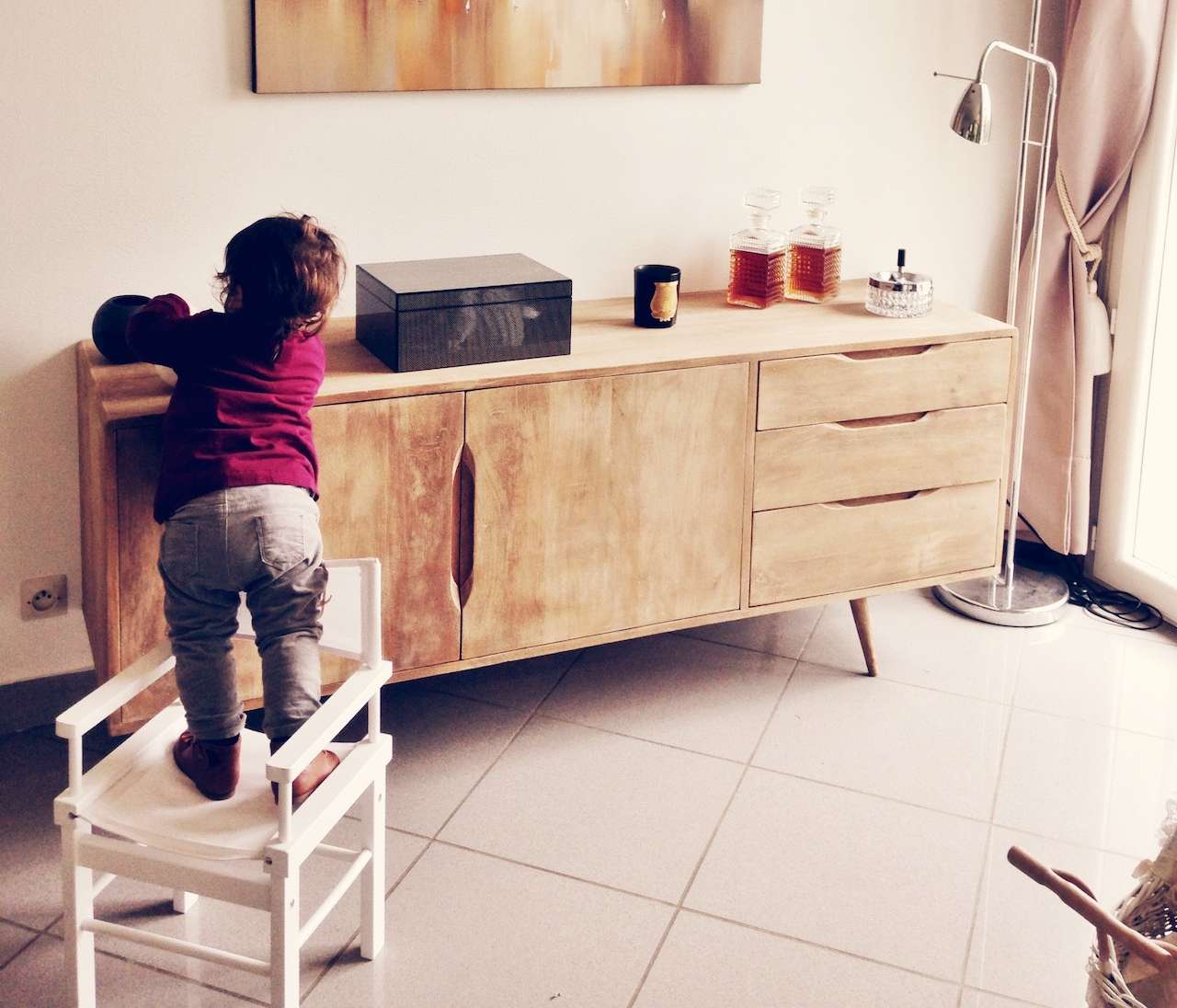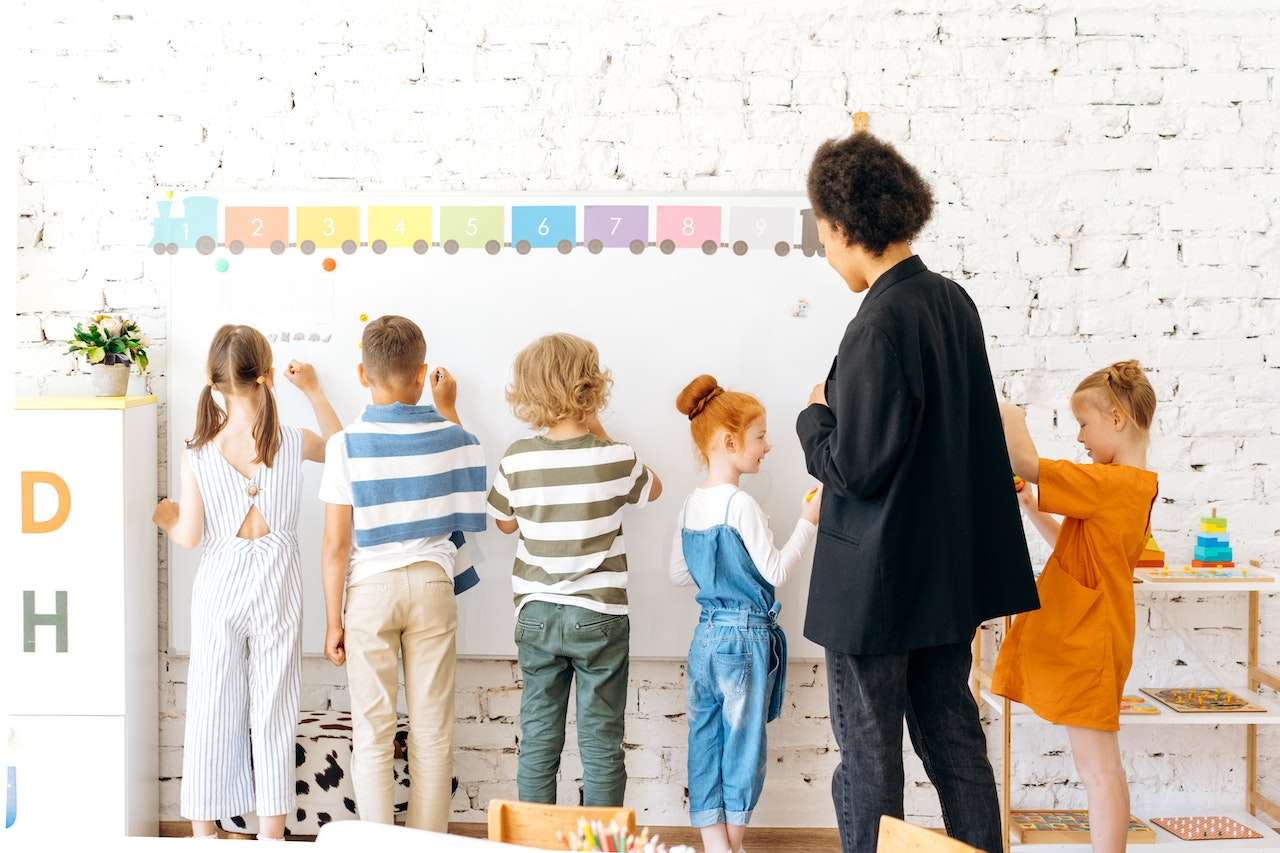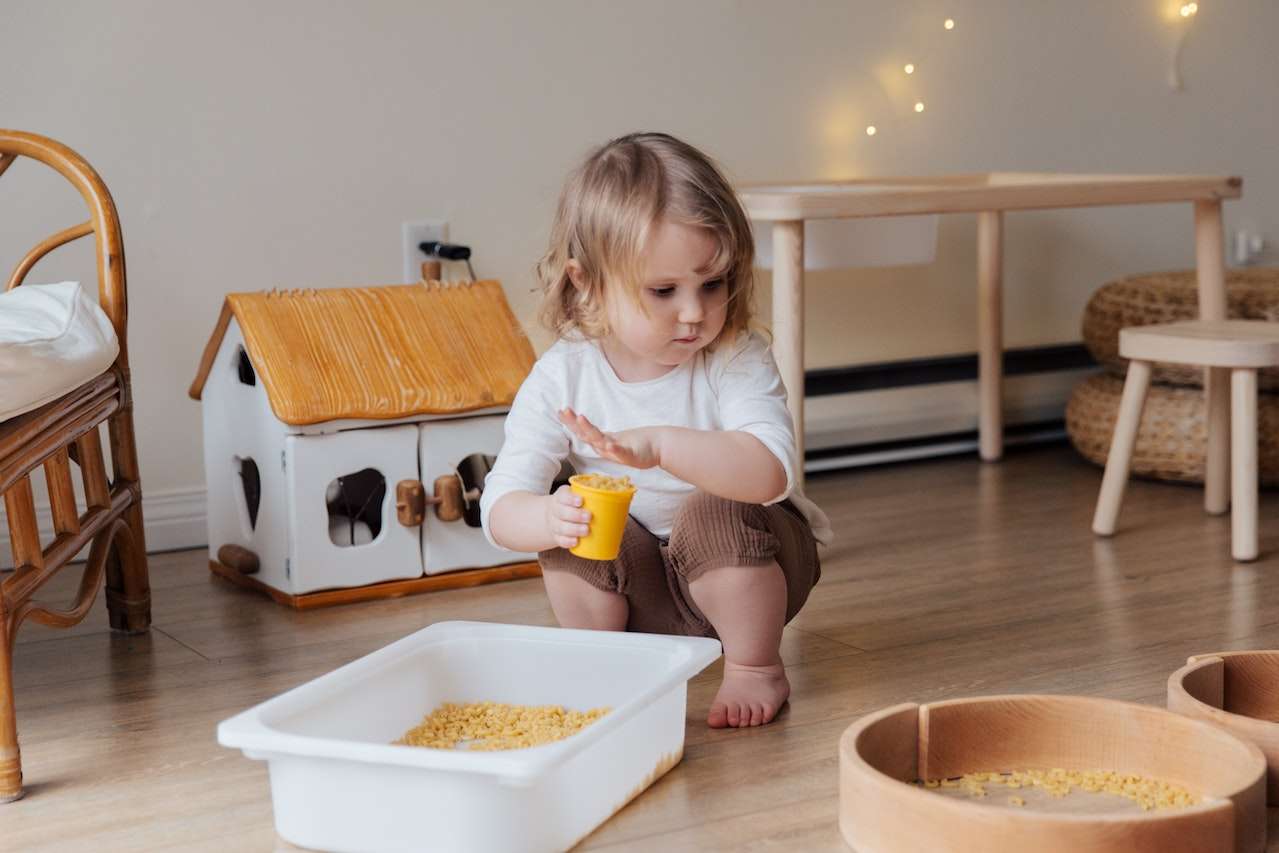Every parent wants to provide their children with a safe and comfortable environment where children are promoted to indulge in developmental activities.
After six months babies are able to make deliberate body movements such as rocking back and forth, the infant also begins to crawl around 9 months of age.
Most expecting parents get overwhelmed with the question of incorporating elements that provide optimum safety for their tiny explorers.
Limiting the child’s environment to a high crib can hinder the enhancement of creative imagination in babies.
Providing your child with a safe and open environment is integral for the child’s cognitive, emotional, physical, and social development.
Infants when allowed to explore their surrounding environment freely and independently are encouraged to enhance as well as their gross motor skills.
But with this newfound freedom comes responsibility, in order to allow your child to be free and avoid any unintended risks or accidents, parents must take requisite measures to promote optimum safety for their mini explorer.
Why should you babyproof your Furniture?
According to the Merriam-Webster dictionary, baby proofing refers to making objects in an infant’s environment safe for the infant or toddler to come in direct contact with in order to minimize or eliminate the hazards.
Children are mini explorers who are always on the move to interact with new and exciting stimuli.
It is a parent’s responsibility to ensure the safety of their infant or toddler and eliminate any hazardous elements from their surroundings.
While providing your child with safe cribs, floor beds, and infant-friendly toys eliminates the risk of unintended accidents, it is equally important to consider the risks pre-existing furniture may have.
Infants after six months begin to develop their gross motor skills and physically explore their surroundings in order to collect necessary stimuli to develop a stronger understanding of the world.
Pre-existing furniture can be exciting stimuli for the child to interact with and no matter how stable or safe it may seem, taking precautionary measures is integral for the infant to toddler’s safety.
What are some baby-proofing Prerequisites?
A quintessential house furniture setup involves tables, chairs, couches, T.V., cabinets, shelves, and so on and so forth.
As harmless as these furniture items may seem to adults, these furniture pieces can become a safety hazard for toddlers and infants.
To avoid unintended accidents and eliminate any risks of injury caused by these furniture items, parents must consider the following babyproofing prerequisites:
1) The wobble check:
It is important to note that toddlers and infants are just beginning to develop gross motor skills.
During this period, children are beginning to strengthen their larger body muscles and are often required to grasp onto items present in their surroundings as effective support.
Parents must check for furniture that wobbles or shakes upon contact.
Whether it is a table, a lamp, or a planter, if it wobbles upon impact or when shaken, it is a parent’s responsibility to immediately remove it from the child’s surrounding environment.
2) Look through the child’s perspective:
It is vital to realize the difference in perspectives or sizes between adults and infants.
Everything seems to be less intimidating and less hazardous when looked at from a higher perspective.
Parents should kneel down to the child’s level and observe furniture that seems to appear intimidating, and eliminate furniture that may be looked over when witnessed at eye level.
Looking at furniture items from the child’s level can help parents identify sharp, shaky, fragile, or hazardous objects that are often overlooked.
3) Identify sharp edges:
Let’s face it, unintendedly stubbing your toe, knee, or leg on a table, chair, or shelf is absolutely the worst.
But such incidents can become more threatening for infants and toddlers.
To avoid such accidents, parents must run their hands along the surfaces of the furniture present to check for any sharp edges in the surrounding environment.
When should you Babyproof the House?
Generally, it is best to initiate the practice of babyproofing the house three months prior to the baby’s due as the task of babyproofing is often tedious, meticulous, and definitely, time-consuming.
But one can also babyproof their home once the baby begins to indicate blatant signs of deliberate movement such as crawling.
You can incorporate babyproofing elements at your home once the child turns 6 to 10 months as a safety measure to prevent any unintended accidents.
Steps to Effectively Babyproof the house
Parenting is a twenty-four-hour job and as a parent, it is your responsibility to provide your child with a safe and nourishing environment.
Within a matter of months, your tiny explorer is able to go on independent ventures in order to search for new and exciting stimuli.
Here is a babyproofing checklist for your home environment to eliminate the possibility of accidents and potential risks:
Babyproofing your living room:
- It is best to remove all the objects that may seem to be too tall, too frail, too wobbly, or too fragile.
- You can install smoke detectors on each level or floor of your house as well as install carbon monoxide detectors near gas appliances.
- Learn how to use a fire extinguisher
- Use Childproof outlet covers
- It is best to use cordless window blinds to avoid strangling hazards
- Furniture with sharp edges should be covered with stick-on corners
- Use nonslip stickers under every rug and carpet of your home
- Use protective latches on shelves and drawers.
Babyproofing your kitchen:
- It is recommended to remove any blinds, curtains, or cords that may cause strangling hazard
- The electrical appliances should always be unplugged
- Use kitchen cabinet latches and shelf locks to prevent the child from climbing or opening drawers containing hazardous material.
- Use Stove knob covers
- Use nonskid and nonslip kitchen rugs
Babyproofing the child’s nursery:
- It is best to remove the crib mobile to avoid choking hazard
- Use a lower crib mattress
- Secure the bookshelf and other shelves to the wall using latches
- Use nonskid rugs
- Install the baby’s crib away from windows, curtains, lamps, shelves, heaters, and other decorative furniture in the room
The Babyproofing checklist:
Tall and hefty house furniture can be a huge area of concern while babyproofing your home.
It is important to note that while some furniture pieces may seem to be less threatening to you as an adult, they can be quite intimidating and hazardous for the infant.
Here is a list of exciting products you can use to efficiently babyproof the furniture present at your house:
1) L Brackets:
Furniture brackets or L brackets are the most affordable and efficient way to prevent unintended risks or accidents.
These brackets do not allow the furniture to move, wobble, or wiggle upon impact and can be easily purchased from a local hardware store.
2) Furniture Anchors:
Furniture anchors are a sturdy alternative to L brackets that help secure easy to maneuver furniture pieces.
Furniture anchors can be found in the following types:
Furniture straps:
Furniture straps are furniture anchors that fashion a fabric strap that latches onto the wall and connects with the furniture pieces.
Furniture Cables:
Furniture cables are furniture anchors that incorporate a wire or a cable that latches on the wall and the furniture pieces. This cable does not allow the furniture to tip over or fall over.
3) Soft Corners:
Soft edges or corners are the easy way to eliminate hard edges in furniture. These edges or soft corners are perfect for children who are just beginning to establish their balance and develop gross motor skills.
4) T.V. Straps:
If you have an LCD or LED T.V. at home you must always secure it with specifically designed T.V., Straps for optimum protection.
5) Floating Shelves:
Floating Shelves are a safe and aesthetically pleasing alternative to normal shelves. These shelves are situated higher on the walls which makes the shelves inaccessible to the child.
Resources:
https://www.forbes.com/sites/jordilippemcgraw/2020/01/02/the-chicest-baby-proof-furniture/
https://www.parents.com/baby/safety/babyproofing/babyproofing-your-home-from-top-to-bottom/


